FUNDING CUTS IMPACT CT HUMANITIES: Help CT Humanities navigate recent funding cuts and continue our vital work across Connecticut. All donations made to CTH will be matched dollar-for-dollar up to $50,000. Donate today!
Now Viewing:
Great Depression and World War II 1929-1945

Connecticut History Day 2026: Revolution, Reaction, Reform in History
Connecticut’s people have taken on responsibilities to establish state and national rights through the courts, protests, and everyday acts.
Read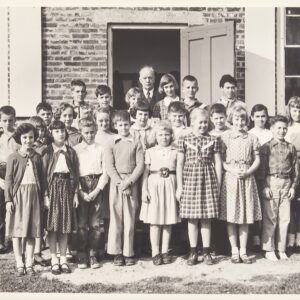
Lewis Sprague Mills and The Story of Connecticut
Lewis Sprague Mills wrote The Story of Connecticut for the state’s students, but today it can be considered a historical document itself.
Read
Ethel Collins Dunham: Pioneer in Pediatrics
A student and professor of medicine, Dr. Ethel Collins Dunham devoted her life to ensuring the care of children throughout the early and mid-20th century.
Read
Navigating Connecticut Safely: The Green Book’s Role in African American Travel
In the mid-20th century, during the era of Jim Crow, the Green Book helped African American travelers find safe restaurants, hotels, gas stations, and other businesses while on the road.
Read
Rosa Ponselle: Meriden’s Famous Musical Daughter
Rosa Ponselle etched her name in history as the first American-born and American-trained singer to star with the Metropolitan Opera Company.
Read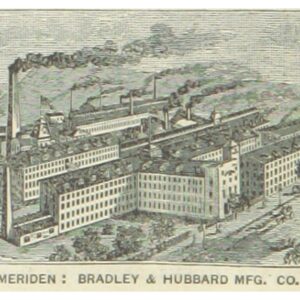
Illuminating Connecticut’s Past: The Bradley & Hubbard Legacy
Meriden’s Bradley & Hubbard Manufacturing Company was an industry-leading American manufacturer of kerosene lamps and metal household items.
Read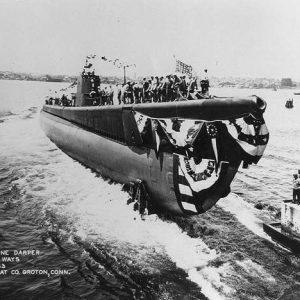
Electric Boat: From Innovation Trials to WWII Submarine Leadership
US submarines accounted for 63 percent of all Japanese ships sunk during WWII—Electric Boat’s vessels were responsible for a significant number of these successful outcomes.
Read
Army-Navy “E” Award Honors Connecticut for Support Against the Axis Powers
During WWII, the US military bestowed 175 Connecticut war plants with the Army-Navy “E” Award for outstanding production contributions to the army and navy.
Read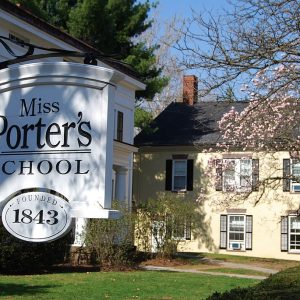
Miss Porter’s School in Farmington
Miss Porter’s School, founded in 1843 in Farmington, is an elite, female, privately funded, 40-acre, educational institution in central Connecticut.
Read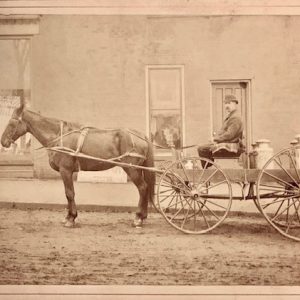
Derby’s Osbornedale Farms, Frances Kellogg, and the Dairy Industry
A family legacy developed by Frances Kellogg, Derby’s Osbornedale Farms stands out for its impact on the Holstein-Friesian breed and contributions to the dairy industry.
Read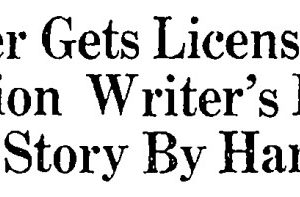
“Girl Pilot”: Mary Goodrich Jenson Breaks Barriers in Aviation and Journalism
Blending her aviation and journalism careers, Wethersfield’s Mary Goodrich Jenson pushed the boundaries of both fields.
Read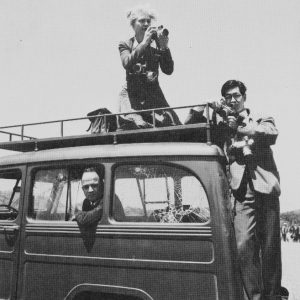
Photojournalist Margaret Bourke-White: “No Picture Was Unimportant to Her”
Margaret Bourke-White photographed some of the 20th century’s most significant people and events, but spent her later years in Darien, Connecticut.
Read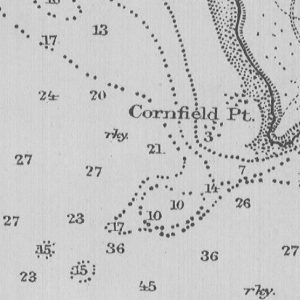
Cornfield Point: Old Saybrook’s Forgotten Scenic Alcove
Cornfield Point, a rocky scenic area bordering the Long Island Sound, is often overlooked but is significant in the state’s maritime and prohibition histories.
Read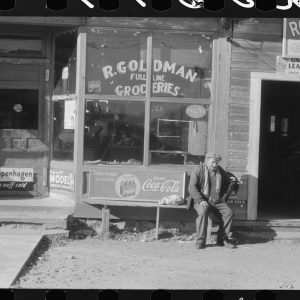
Jewish Farming Communities in Connecticut in the 19th and 20th Centuries
As Jewish immigration to Connecticut increased in the late 19th century, close-knit farming communities formed in Chesterfield and Colchester.
Read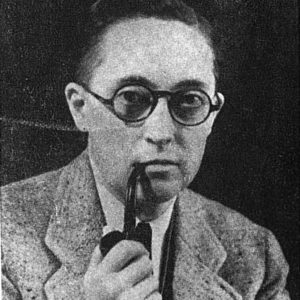
Alan L. Hart: Pioneer in Medicine and Transgender History
An early person to undergo gender affirmation surgery, Alan L. Hart was a physician who pioneered the use of x-ray in early detection for tuberculosis.
Read
James Merrill: Connecticut’s First Poet Laureate
As one of the leading American poets of the 20th century and Connecticut’s first poet laureate, James Merrill lived in Stonington for four decades.
Read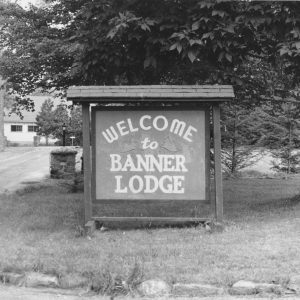
Banner Lodge: A Vacation Playground for an Excluded Population
From the 1930s to the 1970s, Banner Lodge was one of the most popular vacation destinations in Connecticut and actively welcomed a Jewish clientele.
Read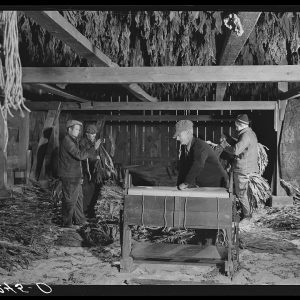
Polish Tobacco Farmers in the Connecticut River Valley
Many Polish immigrants found work on the tobacco farms in the Connecticut River Valley that specialized in the tobacco used for cigar wrappers.
Read
George Laurence Nelson: Artist of Kent’s Seven Hearths
In addition to his artistic pursuits, George Laurence Nelson lived in Kent, Connecticut, for over half a century and restored the historic Seven Hearths house.
Read
A New Source of Farm Labor Crops Up in Wartime
During times of war, in Connecticut, as in many other states, women became an increasingly important resource in food production.
Read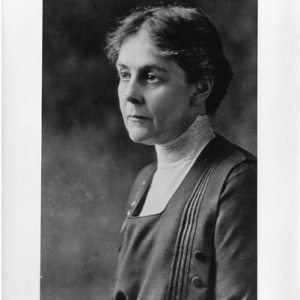
Alice Hamilton: The Nation’s Leading Expert on Industrial Diseases
Dr. Alice Hamilton was a leading authority on industrial diseases and the first female faculty member at Harvard before she retired to Hadlyme, Connecticut.
Read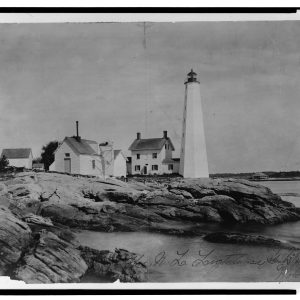
New London Harbor Lighthouse: Connecticut’s First Official Lighthouse
New London Harbor Lighthouse, originally opened in 1761 and rebuilt in 1801, is Connecticut’s oldest surviving and tallest lighthouse.
Read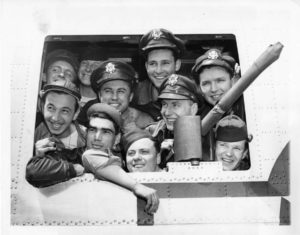
Bradley Airport’s Military Origins
In 1941, the United States government anxiously pursued opportunities to establish an air base in Connecticut to bolster defenses along the East Coast.
Read
The Debate Over Who Could Occupy World War II Public Housing in West Hartford
In the 1940s, African American war workers eligible for government-funded housing found access restricted to some properties despite vacancies.
Read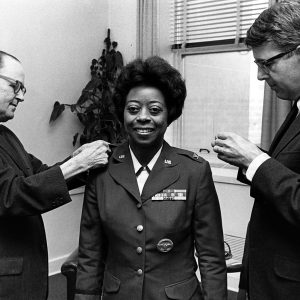
Colonel Ruth A. Lucas: Literary Advocate
In 1968, Ruth A. Lucas became the first African American woman in the air force to attain the rank of colonel and advocated for literacy her whole career.
Read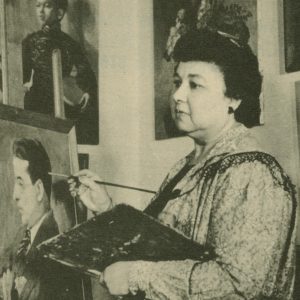
Laura Wheeler Waring: Renowned African American Portrait Artist and Educator
Born in Hartford, Laura Wheeler Waring was an eminent portrait artist of prominent African Americans of the Harlem Renaissance.
Read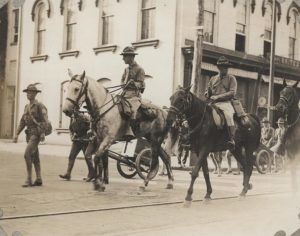
Gerald MacGuire and the Plot to Overthrow Franklin Roosevelt
Gerald MacGuire, a prominent Connecticut businessman, became deeply involved in a reported plot to overthrow the presidency of Franklin Roosevelt.
Read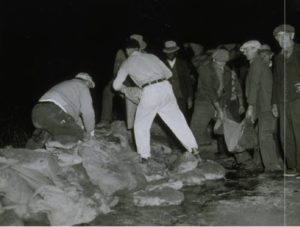
The Hurricane of 1938 Rocks Connecticut
Together the combination of chance and human error produced the most destructive hurricane in Connecticut’s history.
Read
Helen James Chisholm: A Hartford Teacher in Hawaii
Originally from Hartford, Helen James Chisholm’s career took her all the way to the Pacific to teach and run an orphanage.
Read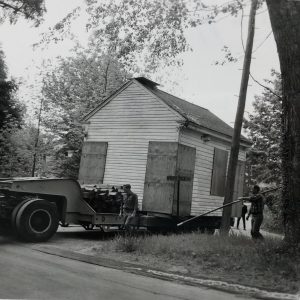
The Connecticut Houses that Ended Up in Massachusetts
Old Sturbridge Village moved numerous historical CT buildings, but evidence of their existence still lives on in historic maps, photographs, and memories.
Read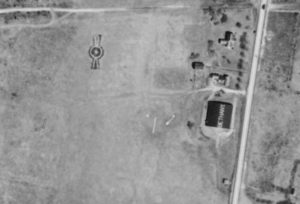
A Busy Airfield in Bethany
In its first few years, the airfield in Bethany served the interests of small-time aviation enthusiasts.
Read
Joseph Alsop: Cunning Political Columnist of Mid-Century America
Joseph Wright Alsop was one of the country’s most well-known political journalists of the 20th century and was drawn into some of the most influential power circles in the world.
Read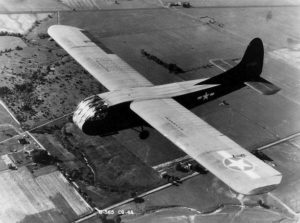
Daring World War II Escape of a Bethany Soldier
A member of the glider service, Rollin Booth Fowler crash landed in Normandy during World War II and was captured, only to execute a daring and dramatic escape.
Read
WDRC AM/FM – Connecticut’s Oldest Commercial Radio Station
WDRC is the oldest continuously operated commercial radio station in Connecticut that uses both AM and FM transmissions.
Read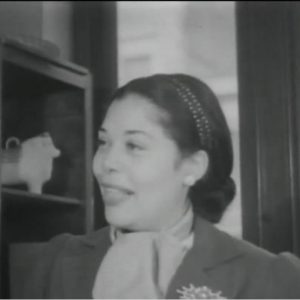
Ann Petry: Old Saybrook’s Bestselling African American Author
Living most of her life in Old Saybrook, Ann Petry was the first African American woman to sell over one million copies of a book with her first novel, The Street.
Read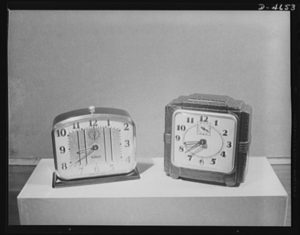
Papier-Mache Clocks – Who Knew?
The William L. Gilbert Clock Corporation of Winsted was one of the few clock-making firms in Connecticut allowed to continue the manufacture of clocks during World War II.
Read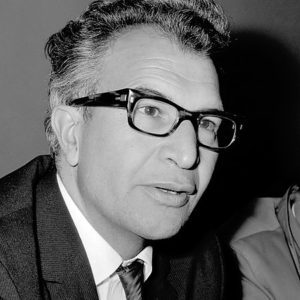
“Take Five” with Dave Brubeck
Dave Brubeck was one of the leading jazz pianists and composers of the 1950s and 60s and made his home in Wilton.
Read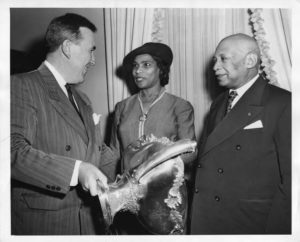
Marian Anderson’s Role in the Civil Rights Movement
Marian Anderson performed and traveled in segregated spaces and emerged as one of the great singers of the 20th century.
Read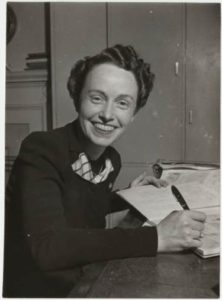
Providing Bundles for Britain and News for America
Janet Huntington Brewster Murrow was a Middletown native who grew up to be one of America’s most trusted news correspondents, philanthropists, and the wife of Edward R. Murrow.
Read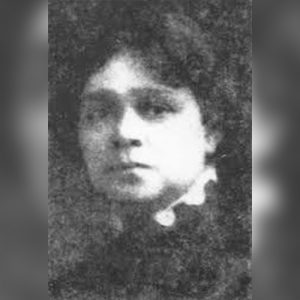
Mary Townsend Seymour: Hartford’s Organizer, Activist, and Suffragist
Mary Townsend Seymour was a leading organizer, civil rights activist, suffragist, and so much more in Hartford during the early 20th century.
Read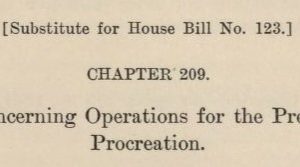
LGBTQ+ Mental Health Treatment in the 20th Century
The simultaneous development of accepted mental health practices and LGBTQ+ visibility over the decades offers a chance to examine how psychological research contributed to the discrimination of LGBTQ+ individuals and communities.
Read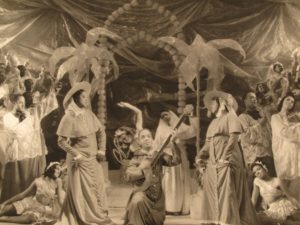
Four Saints in Three Acts Debuts – Today in History: February 7
On February 7, 1934, the Wadsworth Atheneum debuted the modernist opera Four Saints in Three Acts in its new Avery Memorial Theater.
Read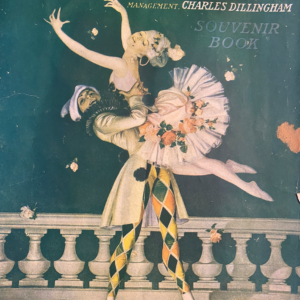
Hartford’s Charles Dillingham Discovered Broadway Stars
After growing up in Hartford, Charles Dillingham explored numerous career paths including newspaper publishing, politics, and—most famously—theatrical managing and producing.
Read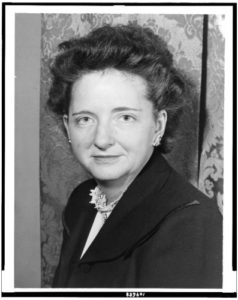
Elizabeth Bentley Born – Today in History: January 1
Elizabeth Terrill Bentley is best known for her role as an American spy for the Soviet Union—and for her defection to become a US informer.
Read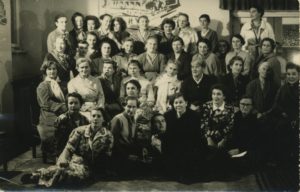
A Godmother to Ravensbrück Survivors
Philanthropist Caroline Ferriday aided women whose internment at a German concentration camp during WWII left them scarred, physically as well as psychologically.
Read
The Early Years of the Pratt & Whitney Aircraft Company
Wasp and Hornet engines secure the reputation and success of this 1920s start-up venture.
Read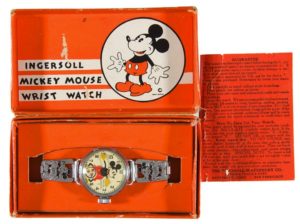
Waterbury Clock Company Saved by Mickey Mouse – Who Knew?
The Ingersoll Waterbury Company (now Timex) was saved from bankruptcy during the Great Depression, in part, by the introduction of the Mickey Mouse watch.
Read
Phillips’ Milk of Magnesia Originated in Stamford
In 1873, Charles H. Phillips patented Milk of Magnesia and his company produced the popular antacid and laxative in Stamford, Connecticut, until 1976.
Read
Beechmont Dairy: Bridgeport’s Ice Cream to Die For
Joseph Niedermeier Sr. founded the Beechmont Dairy in Bridgeport in 1906—a popular local business for over 60 years.
Read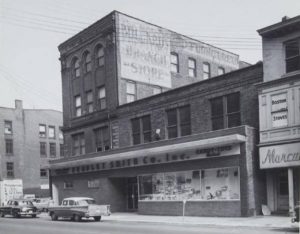
New Haven Gives the Lollipop its Name – Today in History: October 13
On October 13, 1931, the name “Lolly Pop” was officially registered to the Bradley Smith Company of New Haven by the US Patent and Trademark Office.
Read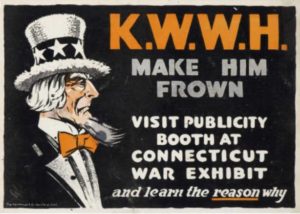
Winning the Great War without Some Books
In April 1918, Governor Holcomb designated English as the only language to be used in teaching and prohibited schools from employing “alien enemies.”
Read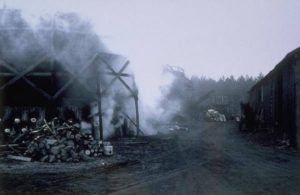
1938 Hurricane Fuels Charcoal Business – Who Knew?
The hurricane of 1938, which devastated the Quinebaug Forest, ended up driving the development of the charcoal industry in Union.
Read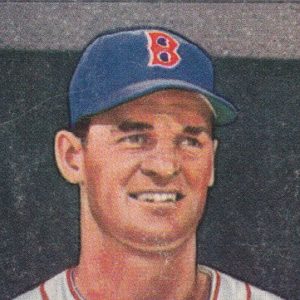
Walt Dropo Stars Throughout New England
Few major league baseball players had rookie seasons as good as Walt Dropo’s while playing for the Boston Red Sox in 1950.
Read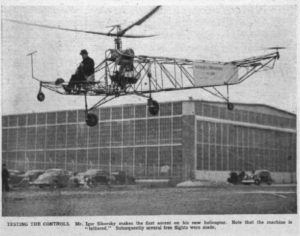
World’s First Helicopter – Today in History: September 14
On September 14, 1939, the VS-300, the world’s first practical helicopter, took flight at Stratford, Connecticut.
Read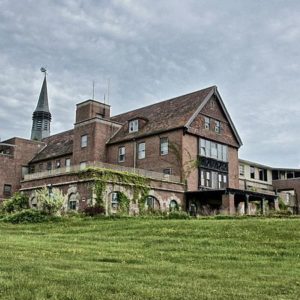
Seaside Tuberculosis Sanatorium: Waterford’s Contested Oceanfront Gem
Connecticut’s Seaside Sanatorium in Waterford is the site of a former nationally recognized tuberculosis hospital.
Read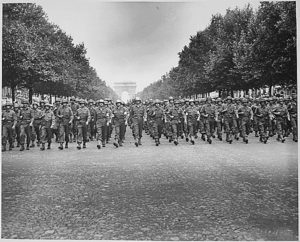
Connecticut Servicemen in the “Bloody Bucket” Division
Nicknamed the “Keystone Division,” the United States Army’s 28th Infantry Division came together in 1917 by combining units of the Pennsylvania National Guard.
Read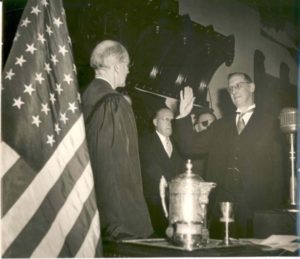
Did You Know a Connecticut Governor Was a US Spy?
In late 1943 James Lukens McConaughy became Deputy Director in Charge of Schools and Training for the precursor of the Central Intelligence agency.
Read
Bigelow Tea–A Connecticut Tea Party
The Bigelow Tea Company was started as a small family business in Manhatten before moving to Norwalk and then Fairfield.
Read
Merritt Parkway Creates Scenic Gateway to New England
This Depression-era road improvement project sought to artfully balance the natural and built environments.
Read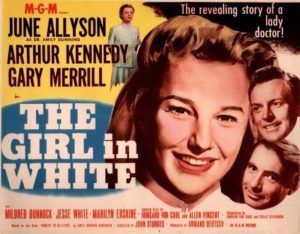
New Canaan’s Pioneering Female Physician
Dr. Emily Dunning Barringer was the first female ambulance surgeon in New York City and the first female physician to work as an intern in a New York City hospital.
Read
Bradley International Airport Transforms Windsor Locks into Regional Gateway
Bradley International Airport in Windsor Locks is Connecticut’s largest airport and the second largest in New England.
Read
Vera Buch Weisbord’s “Radical” Life
Vera Wilhelmine Buch Weisbord was a labor activist who helped organize trade unions and strikes that shaped the labor movement of the 1920s and 1930s.
Read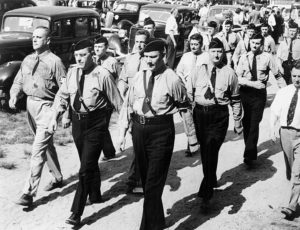
The Vonsiatsky Conspiracy Case
In 1942, Anastase Vonsiatsky of Thompson, Connecticut, was convicted of conspiring to betray state secrets to Nazi Germany.
Read
Laboring in the Shade
Thousands of Black Southern students, including a young Martin Luther King Jr., came north to work in Connecticut’s tobacco fields.
Read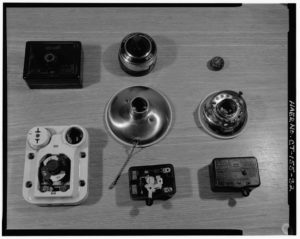
The Rise and Fall of Manufacturing in Bridgeport: The Case of Bryant Electric
For one hundred years Bryant Electric was a staple of Bridgeport industry, adapting to the challenges of the changing industrial landscape in America.
Read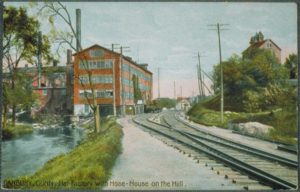
Rivers of Outrage
Pollution of Connecticut’s waters by industrial waste and sewage in the decades after the Civil War was arguably the state’s first modern environmental crisis.
Read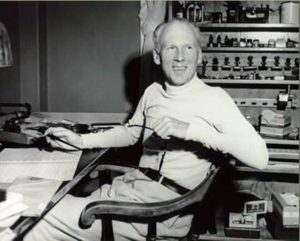
Leroy Anderson Composed Iconic Music in Woodbury
Leroy Anderson, a long-time resident of Woodbury, was one of the most popular composers of light concert music in the 20th century.
Read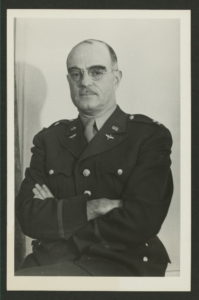
Hamden’s Literary Legend
Thornton Wilder, author of such renowned works as Our Town, The Matchmaker, and The Bridge of San Luis Rey, lived in Hamden for much of his life.
Read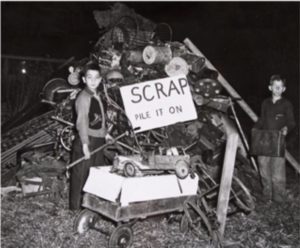
Women and Defense: World War II on the Connecticut Home Front
Women who stepped into civil defense positions managed and implemented programs that educated the public, promoted war bond sales, and aided emergency preparedness.
Read
Beatrice Fox Auerbach: Retail Pioneer Led Iconic Family Department Store
Beatrice Fox Auerbach was pioneering retail executive who ran the G. Fox & Co. department store and numerous philanthropic benefiting people in Hartford and around the world.
Read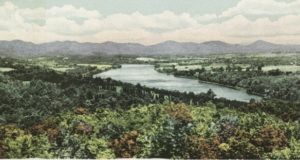
The Connecticut Valley Authority That Never Was
In the early 20th century, supporters of the New Deal tried to recreate the Tennessee Valley Authority in the Connecticut River Valley.
Read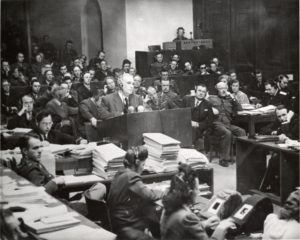
Connecticut Lawyer Prosecutes Nazi War Criminals at Nuremberg
In the immediate aftermath of World War II, Thomas Joseph Dodd served on the United States’ prosecutorial team as Executive Trial Counsel at the International Military Tribunal (IMT).
Read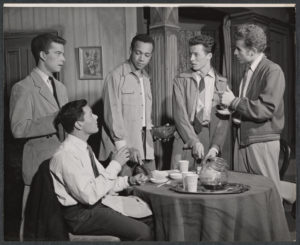
Hartford’s Louis Peterson, Groundbreaking African American Playwright
Hartford’s Louis Peterson was a groundbreaking African American playwright in the 20th century.
Read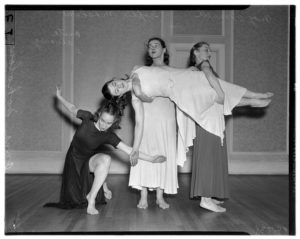
Hartford’s Anna Sokolow, Modern Dance Pioneer
Hartford’s Anna Sokolow became one of the most important figures in modern dance during the 20th century.
Read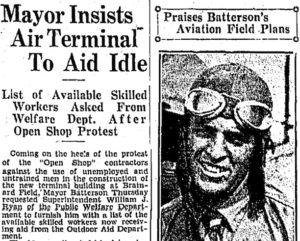
“Something to Show for Our Work”: Building Brainard Airport
At the height of the Great Depression, unemployed men living around Hartford, became a cheap source of labor to help build Brainard airport.
Read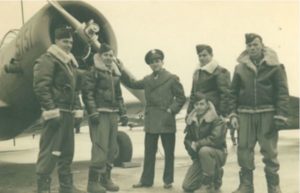
Hometown Hero: Wallingford Remembers Stanley Budleski
Stanley Budleski was the first serviceman from Yalesville to be killed in World War II.
Read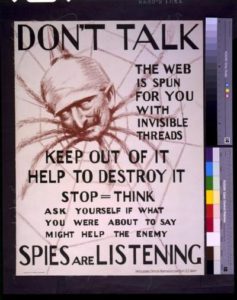
War and the Fear of Enemy Aliens – Who Knew?
…that Greenwich had a special police unit trained to handle suspected foreign agents operating in Connecticut.
Read
Hurricane of 1938: Connecticut’s Worst Disaster
Deadly as well as costly, this storm scarred the landscape for decades after and left each Connecticut family with its own tale to tell of the ruinous events.
Read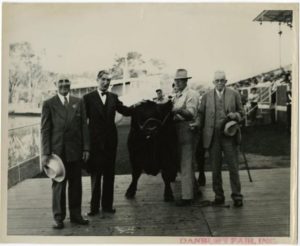
Hard Times: Governor Wilbur Cross and the Great Depression in Connecticut
Born in Mansfield, Governor Wilbur Cross helped see Connecticut through the Great Depression and several natural disasters.
Read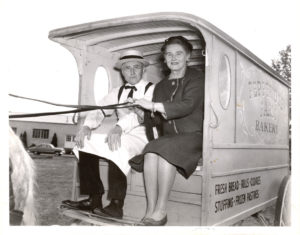
Pepperidge Farm: Healthful Bread Builds a Business
Margaret Rudkin founded the popular brand Pepperidge Farm after finding out her son’s asthma was made worse by additives found in bread.
Read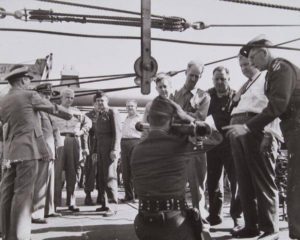
The Bazooka Changes War – Today in History: June 14
On June 14, 1942, the General Electric Company in Bridgeport finished production on the “Launcher, Rocket AT, M-1,” better known as the bazooka.
Read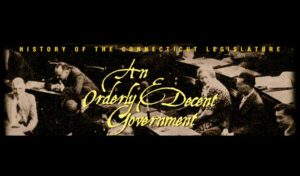
An Orderly & Decent Government: Making Self-Government Work, 1929-1964
Connecticut attempted to reorganize it state government by streamlining its agencies and rejected a number of socially progressive programs.
Read
An Orderly & Decent Government: Searching for the Common Good, 1929-1964
Organized labor grew strong during wartime while discriminatory practices in housing and education persisted throughout the state.
Read
An Orderly & Decent Government: Significant Events & Developments, 1929-1964
The era of Wilbur Cross and the Great Depression transitioned into World War II and state control by Democrat mastermind John Bailey.
Read
An Orderly & Decent Government: Crisis and Recovery, 1929-1964
World War II helped bring an end to the Great Depression in Connecticut. Following the war, the growth of the suburbs redefined life in the state.
Read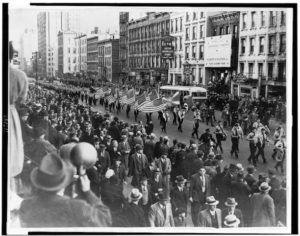
Southbury Takes On the Nazis
When the Nazis moved into Southbury, however, local citizens reacted forcefully, eventually pushing the anti-Semitic settlers out of the state.
Read
Connecticut Daredevil Andrew Mamedoff Joins Royal Air Force
Andrew Mamedoff was a daredevil, pilot, and war hero who became one of the first Americans to join England’s Royal Air Force.
Read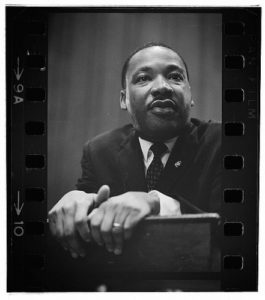
Dr. Martin Luther King Jr’s Time in Connecticut
In the summer of 1944, a young Martin Luther King Jr. worked at the Simsbury tobacco farm of Cullman Brothers, Inc.
ReadMore Articles




